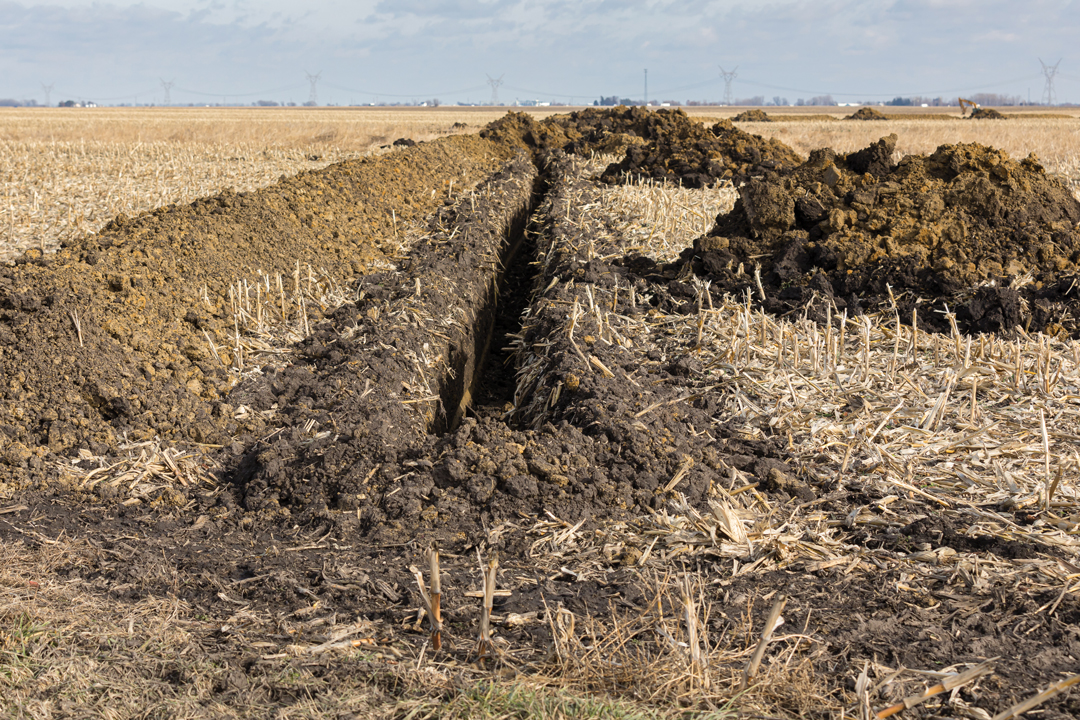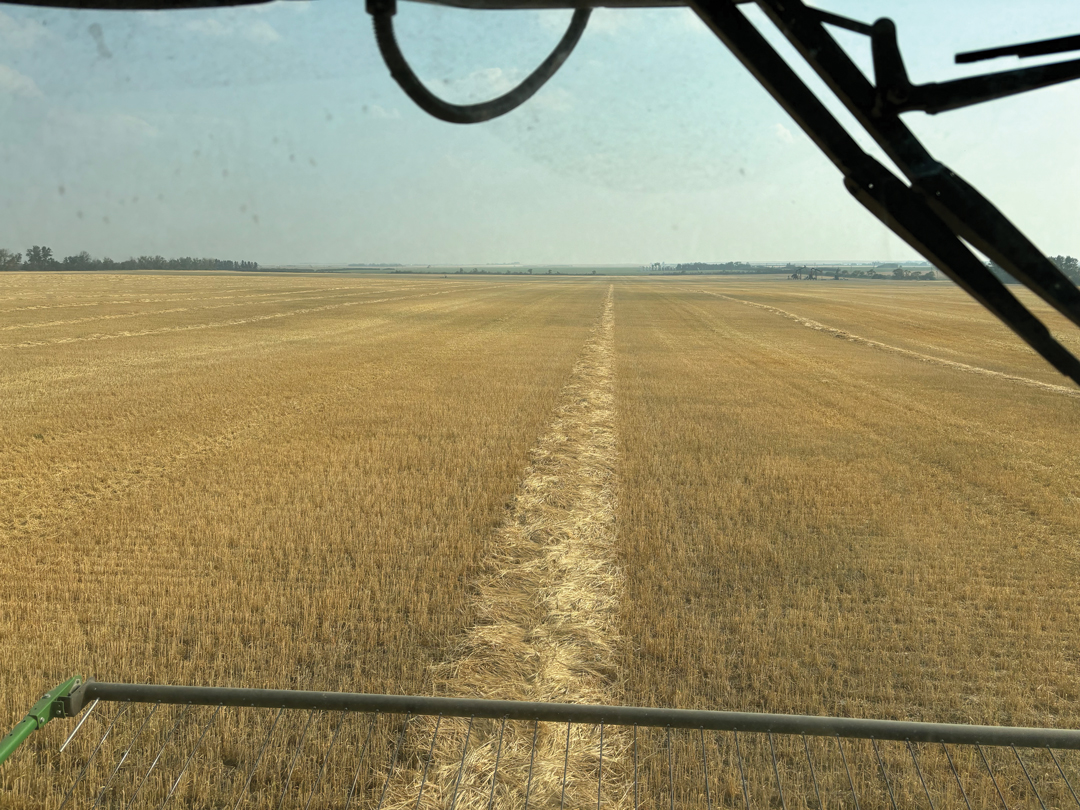GO WITH THE FLOW
BY EVAN LINTICK • PHOTO BY SHUTTERSTOCK
Excess moisture on agricultural lands across Alberta has increasingly become an issue over the past few years. In 2020, several areas were subject to heavier than average snow melt and subsequent rainfall. This unpredictable wet weather sparked discussion on how farmers may mitigate the problem.
Increased implementation of tile drainage is a promising means to remove excess moisture from farmland. It has several benefits for farmers and the agricultural economy, and, if used correctly, is environmentally sustainable.
These potential benefits have not been fully realized by Alberta farmers due to the restrictive regulations that apply to tile drainage projects. This is an area where Alberta’s UCP government may be able to apply its red tape reduction strategy.
While working with the Alberta Wheat Commission (AWC) and Alberta Barley policy team, I have had the opportunity to speak to farmers about this issue. “Tile Drainage is a viable solution to the excess moisture and has even more positives, but the provincial regulations stand as a blockage to its implementation,” said Jason Casselmen who farms near Fairview.
With a lack of alternatives, Alberta farmers have frequently utilized surface drainage. However, it has been considered a short-term solution that can create soil erosion and transport valuable nutrients and other inputs into culverts and ditches.
Farmers have also found it difficult to co-ordinate with counties regarding surface drainage projects. Ditches are often not maintained, causing blockages that contribute to flooding where surface drainage is utilized. As well, where ditches overflow, they can carry debris from roadways and form blockages.
As a long-term alternative to surface drainage, tile drainage may help farmers remove excess moisture, increase yield potential and realize other benefits. As water passes through the soil and is drained by means of buried pipe, the earth acts as a filtration system that better retains essential nutrients and crop inputs. These are then not deposited in ditches and waterways. The process also generates oxygen within the soil and can reduce year-to-year crop variability associated with the fluctuation of precipitation.
With these benefits, why has tile drainage not been more widely implemented in Alberta as it has in other provinces? A negative impact cited by the Alberta government is the disruption of wetlands. Tile drainage has been identified as a contributor to downstream flooding. However, this lack of uptake can be primarily attributed to provincial implementation regulations.
Jason Lenz is an AWC region three director and farms near Bentley. He installed tile drainage on his property prior to 2000 and has seen benefits ever since. However, he said onerous regulations have made it increasingly difficult for farmers to install similar systems. This manifests in the sheer number of approvals required.

It may take as many as seven approvals to green-light a tile drainage project. These include environmental assessments, Water Act approvals and water allocation licences.
In many cases, this preliminary approval process itself may also take up to a year to complete, cost tens of thousands of dollars and runs the risk of further delaying the installation of drainage systems. Because of these factors, farmers have naturally shied away from tile drainage as a long-term method of removing excess water from their land.
The regulations have also created an unwelcoming environment for tile drainage installation companies, which no longer find it viable to operate within the province. “It may not be the intention of the province to drive away tile drainage contractors but the lack of opportunity makes it difficult to operate in Alberta,” said Casselmen.
From the provincial government’s perspective, these regulations are in place to protect Alberta’s existing wetlands. However, the classification system that determines what constitutes a wetland can be quite strict and challenging to navigate, and more so than in other Prairie jurisdictions. In many cases, if bodies of water exist on land past casual rainfall, they are increasingly protected under the provincial wetlands policy. Many tile drainage projects have been denied under its restrictions and it limits the options farmers may use to deal with excess moisture on their farmland. “The level of regulations that exist have created too many hurdles for farmers to want to follow through with their tile drainage projects,” said Lenz.
While Alberta’s stringent regulations have tended to remove tile drainage from the list of options for farmers, other provinces, particularly Manitoba and Ontario, have found ways to support installation. Both provinces have allowed for more strategic environmental planning around tile drainage. As well, co-ordination between the farmer and the county allows for drainage into locations that do not interfere with wildlife or neighbouring property.
For instance, Ontario’s Drainage Act additionally allows tile drainage installation in co-ordination with counties and municipalities. The province has also established a loan program to aid farmers in covering the cost of tile drainage through their municipal taxes over a 10-year period. The Ontario loan program is similar to one established in Manitoba, which has contributed to significant tile drainage adoption among farmers and the completion of work by installation companies.
Should Alberta wish to similarly adopt a less burdensome regulatory framework for tile drainage, the farm economy may benefit and the province may also save money on crop insurance payouts for unviable acres.
Greater implementation of tile drainage may also benefit counties and municipalities in managing issues related to road grade erosion and ditch maintenance. The use of tile drainage could mitigate flooding and degradation of rural roads as well as the blockage of ditches and culverts. The co-ordination and support of the counties could ensure the creation of suitable outlets for drained water such as retention ponds and constructed wetlands.
With alterations to the existing tile drainage policy, the Alberta government may further achieve its red tape reduction goals while benefitting farmers and the economy.
Evan Lintick is AWC and Alberta Barley policy and markets analyst.







Comments